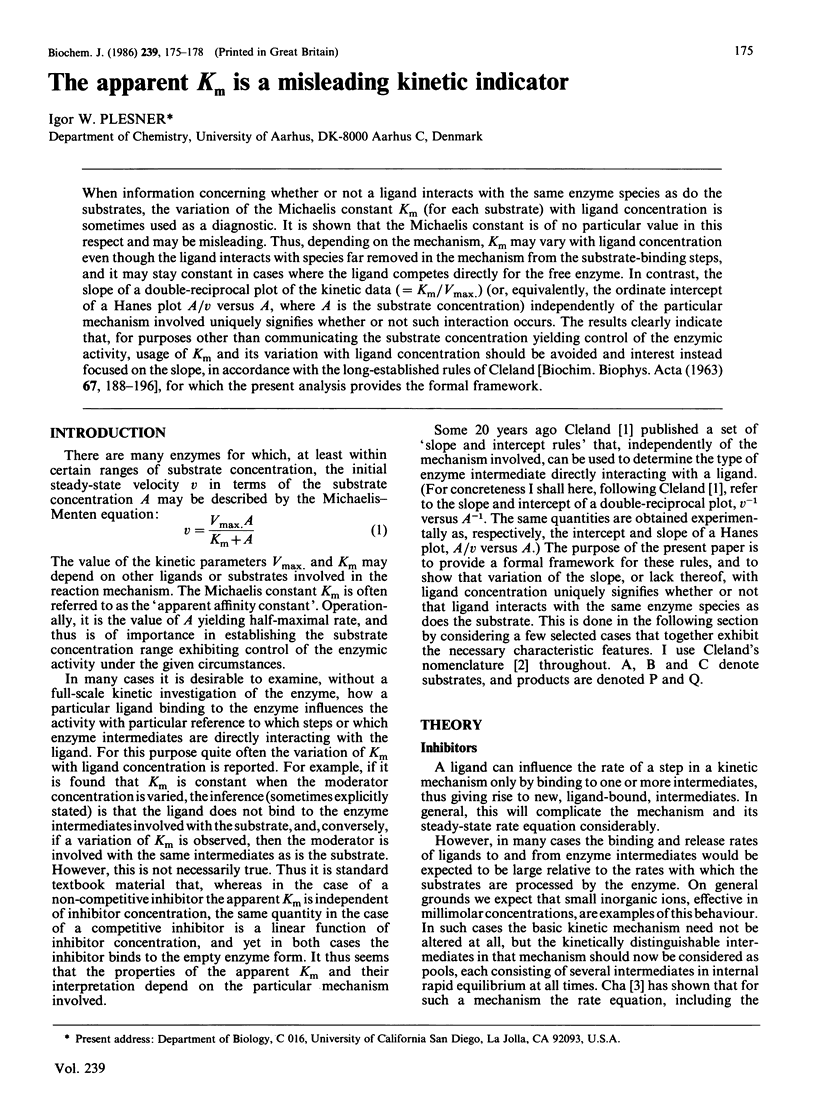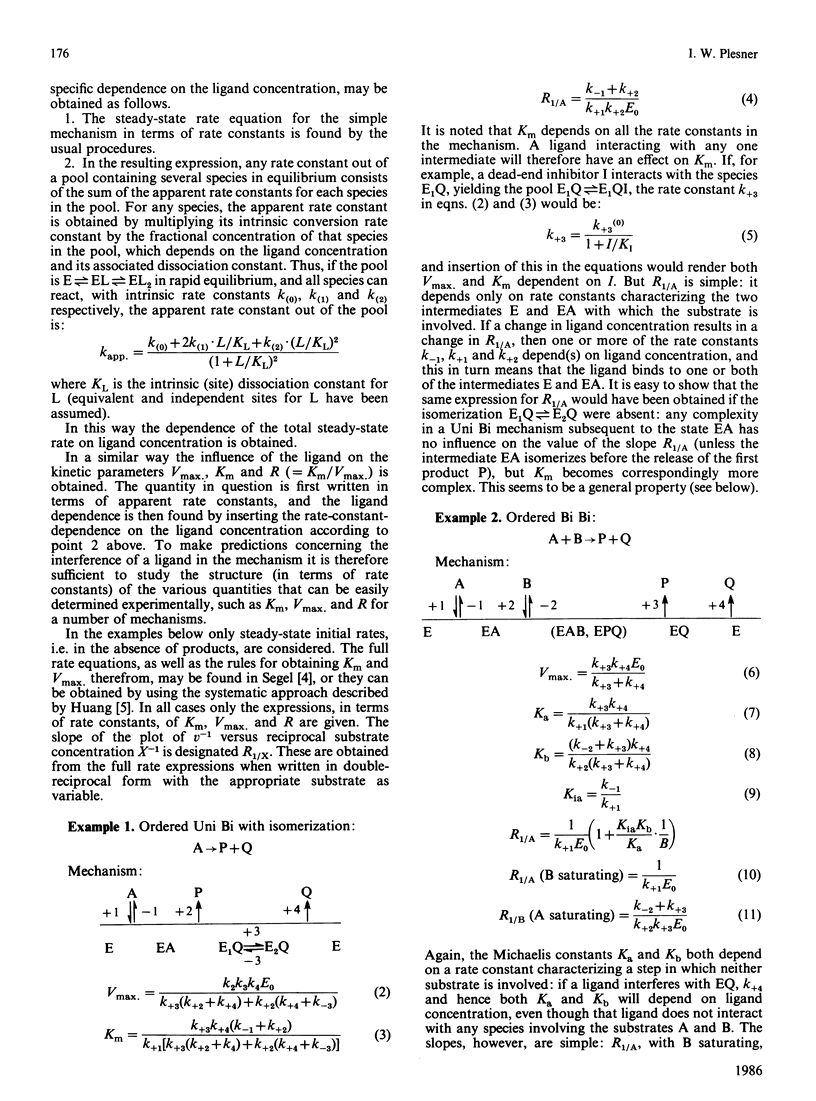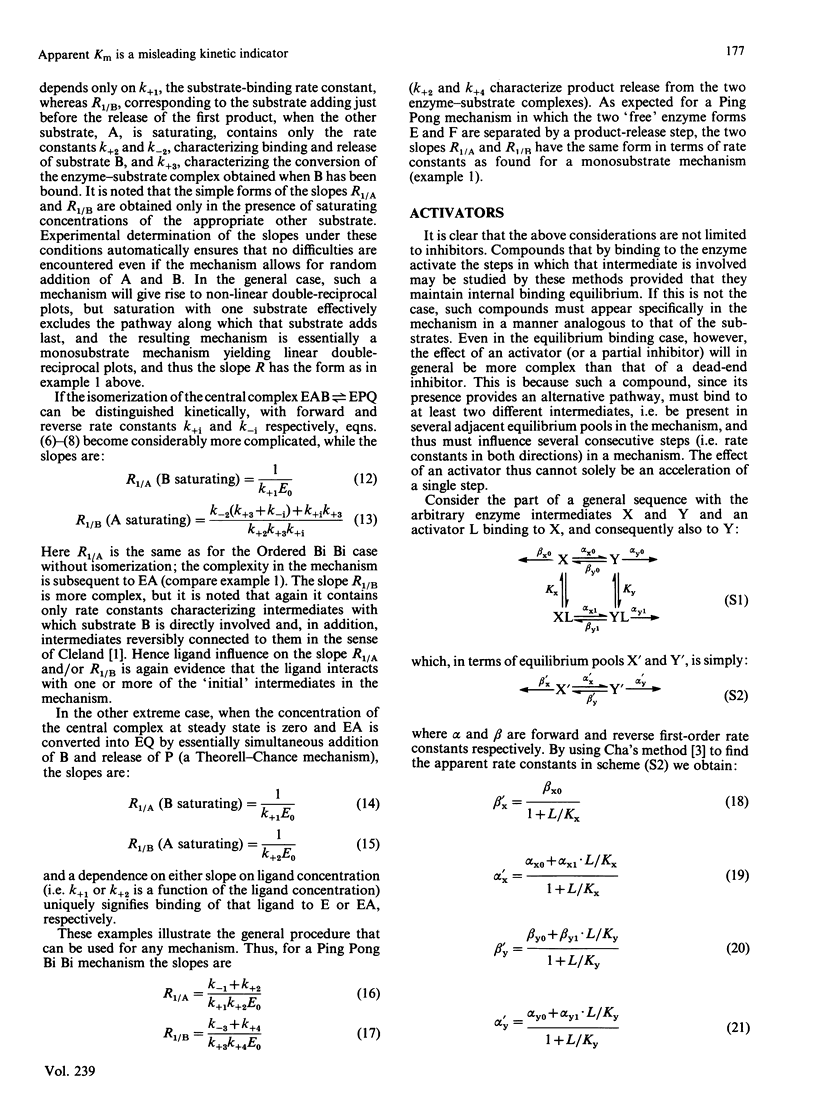Abstract
When information concerning whether or not a ligand interacts with the same enzyme species as do the substrates, the variation of the Michaelis constant Km (for each substrate) with ligand concentration is sometimes used as a diagnostic. It is shown that the Michaelis constant is of no particular value in this respect and may be misleading. Thus, depending on the mechanism, Km may vary with ligand concentration even though the ligand interacts with species far removed in the mechanism from the substrate-binding steps, and it may stay constant in cases where the ligand competes directly for the free enzyme. In contrast, the slope of a double-reciprocal plot of the kinetic data (= Km/Vmax.) (or, equivalently, the ordinate intercept of a Hanes plot A/v versus A, where A is the substrate concentration) independently of the particular mechanism involved uniquely signifies whether or not such interaction occurs. The results clearly indicate that, for purposes other than communicating the substrate concentration yielding control of the enzymic activity, usage of Km and its variation with ligand concentration should be avoided and interest instead focused on the slope, in accordance with the long-established rules of Cleland [Biochim. Biophys. Acta (1963) 67, 188-196], for which the present analysis provides the formal framework.
Full text
PDF



Selected References
These references are in PubMed. This may not be the complete list of references from this article.
- CLELAND W. W. The kinetics of enzyme-catalyzed reactions with two or more substrates or products. I. Nomenclature and rate equations. Biochim Biophys Acta. 1963 Jan 8;67:104–137. doi: 10.1016/0006-3002(63)91800-6. [DOI] [PubMed] [Google Scholar]
- CLELAND W. W. The kinetics of enzyme-catalyzed reactions with two or more substrates or products. III. Prediction of initial velocity and inhibition patterns by inspection. Biochim Biophys Acta. 1963 Feb 12;67:188–196. doi: 10.1016/0006-3002(63)91816-x. [DOI] [PubMed] [Google Scholar]
- Cha S. A simple method for derivation of rate equations for enzyme-catalyzed reactions under the rapid equilibrium assumption or combined assumptions of equilibrium and steady state. J Biol Chem. 1968 Feb 25;243(4):820–825. [PubMed] [Google Scholar]
- Huang C. Y. Derivation and initial velocity and isotope exchange rate equations. Methods Enzymol. 1979;63:54–84. doi: 10.1016/0076-6879(79)63006-9. [DOI] [PubMed] [Google Scholar]
- Plesner I. W., Plesner L. Kinetics of (Na+ + K+)-ATPase: analysis of the influence of Na+ and K+ by steady-state kinetics. Biochim Biophys Acta. 1985 Aug 27;818(2):235–250. doi: 10.1016/0005-2736(85)90564-4. [DOI] [PubMed] [Google Scholar]
- Plesner L., Plesner I. W. Kinetics of Na+-ATPase: influence of Na+ and K+ on substrate binding and hydrolysis. Biochim Biophys Acta. 1985 Aug 27;818(2):222–234. doi: 10.1016/0005-2736(85)90563-2. [DOI] [PubMed] [Google Scholar]


